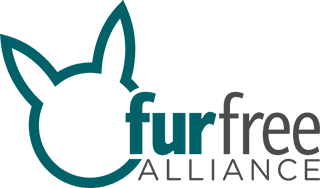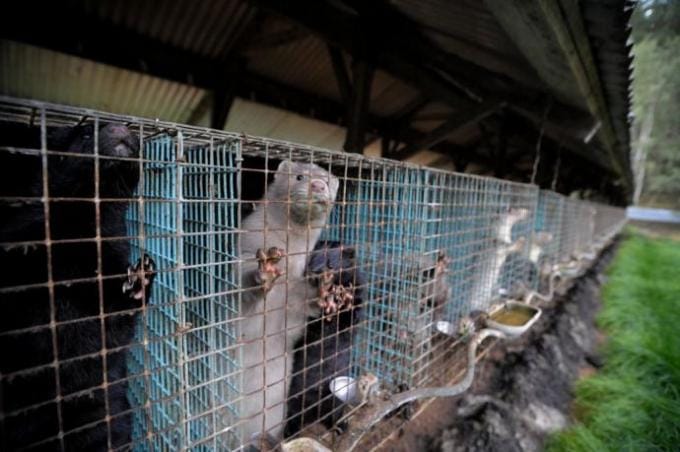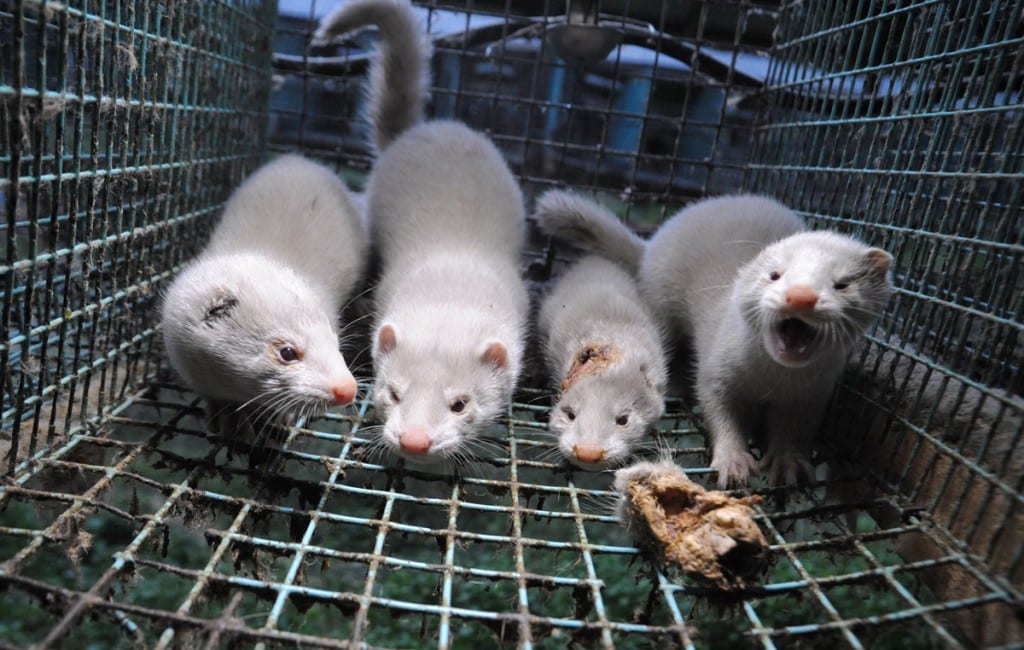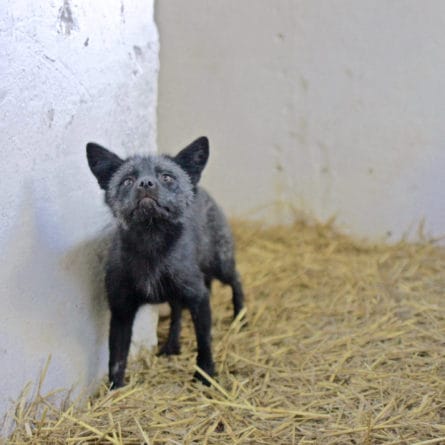
Response to National Geographic’s ‘Why Fur is Back in Fashion’
The Fur Free Alliance is greatly dismayed that the story ‘Why Fur Is Back in Fashion’ (National Geographic, September 2016) does not fully reflect the often cyclical – boom and bust – nature of the international fur industry and, instead, presents the National Geographic readers with a most unsubstantiated and unbalanced view on the increasingly disputed practice of fur farming.
The article gives the impression that fur production is now at record levels quoting a figure of 84 million mink killed in fur factory farms in 2015 for their fur. As is pointed out, recent increases in demand for fur in Russia and China led to a dramatic increase in the price of a mink pelt at auction – the industry benchmark. But this led to enormous overproduction and an almost inevitable slump.
The Chronicle Herald in Canada (4 August 2016) recently reported that mink pelts that had previously fetched $100 were being sold ‘for only $40 last year and are now going for about $30.’
The article points out that because each pelt costs around $45 to produce, cut-backs in production were inevitable. As a result, as many as 35 mink farms will have closed just in Nova Scotia alone over the last two years.
This dramatic downturn is confirmed by the world’s largest auction house, Kopenhagen Furs that, in June 2016, reported that mink production has fallen from 72 million in 2015 to 54 million now with the greatest drop happening in China (18 million last year to 8 million in the current breeding/killing period).
These economic cycles in the fur industry have come to be expected but are often overlooked as the fur industry’s relentless efforts at public relations and marketing gloss over them through continuous portrayals of a world where fur is in fashion, designers are in love with fur and the welfare of the animals should not be of concern to consumers.
Of late, this same PR and marketing machine has taken on a more sophisticated but sinister turn. Using the same tactics as the tobacco industry it has found a way to introduce its version of science in its defence.
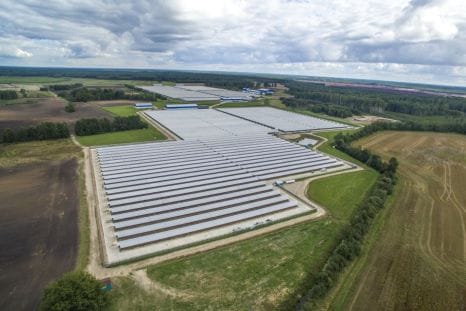 The industry-funded ‘Welfur’ program referred to in the article is an attempt to mimic the European Commission’s established and credible ‘Welfare Quality’ (WQ) initiative aimed at measuring and improving the welfare of hundreds of millions of livestock kept in European Union countries.
The industry-funded ‘Welfur’ program referred to in the article is an attempt to mimic the European Commission’s established and credible ‘Welfare Quality’ (WQ) initiative aimed at measuring and improving the welfare of hundreds of millions of livestock kept in European Union countries.
Omitting key elements of this WQ protocol and by adopting a ‘best current practice ceiling’, Welfur aims to maintain the status quo whilst pacifying the many critics of breeding animals for their fur.
The author’s repeated claim of animal welfare improvements in the fur industry is contested by extensive scientific evidence demonstrating that it is impossible to meet the most basic welfare requirements of undomesticated animals in factory fur farms. Mink and fox are unlike any other livestock. They are predatory carnivores, territorial and, in the case of mink, solitary by nature. They are also still wild animals. Fear of humans in undomesticated animals makes them fundamentally unsuitable for farming and causes serious stress-related welfare problems as self- mutilation, infected wounds, cannibalism and stereotypical behavior.
As long ago as 2000, the European Commission’s Scientific Committee of Animal Welfare and Animal Health (SCAHAW) in a comprehensive report (The Welfare of Animals Kept For Fur Production) concluded and recommended that ‘Since current husbandry systems cause serious problems for all species of animals reared for fur, efforts should be made for all s
pecies to design housing systems which fulfil the needs of the animals.’ Since the publication of the report the fur factory farm industry has ignored the central criticisms and recommendations and the conditions endured by the animals they breed, rear and kill remain largely the same: ‘The animal welfare in fur farming has shown little improvement over the last 15 years, despite the use of disproportionally large official resources both on research and inspection’ (Norwegian Veterinary Association, 2015).
The truth is, the push to increase animal welfare and ethical and environmental concerns have led eight European countries to outright ban fur farming in recent years: UK and Northern Ireland (2000), Austria (2004), Croatia (2006), Bosnia and Herzegovina (2009), The Netherlands (2013), Slovenia (2013), Republic of Macedonia (2014) and Spain (2015). Five more countries – i.e. Germany, Czech Republic, Belgium, Norway and Luxembourg – are currently having parliamentary debates about fur farming ban proposals. These bans are based on scientific research, the public interest and ethical grounds.
A statement of the Dutch Ministry of Economic Affairs on fur farming in 2016 shows that the public opinion against fur farming is reflected by law in an increasing number of countries:
‘Causing suffering and taking the life of an animal for a non-essential and even trivial reason cannot be morally justified. It contravenes public morality in the Netherlands.’
However, author Conniff gravely and glaringly omits any mention of society’s increased ethical concerns about fur farming, and instead presents us with a one-dimensional view of the catwalk as representative of public morality. The truth is that society can and does see well beyond the bright lights of a fashion show.
 The author’s argument against a fur farming ban, that ‘it just moves production to areas where no rules apply’, is not ethically valid, for the same reason that it is not morally justified to make child labor legal because of poorer conditions elsewhere. Furthermore, there is simply not a single fur farm in the world with rules or standards strong enough to make it an ethical practice: severe, tragic animal welfare abuses have been scientifically proven to be the standard on fur farms in Norway, China and everywhere else.
The author’s argument against a fur farming ban, that ‘it just moves production to areas where no rules apply’, is not ethically valid, for the same reason that it is not morally justified to make child labor legal because of poorer conditions elsewhere. Furthermore, there is simply not a single fur farm in the world with rules or standards strong enough to make it an ethical practice: severe, tragic animal welfare abuses have been scientifically proven to be the standard on fur farms in Norway, China and everywhere else.
Richard Conniff concludes with the idea: ‘Instead of banning fur production, keep applying pressure to push out the worst farmers.’ While this sounds reasonable at first glance, this recommendation gravely ignores the serious, insurmountable welfare issues inherent to the industry.
Keeping and killing tens of millions of wild animals each year in tiny, barren wire cages for nothing more than the fur off their backs is offensive and wrong. It is surely time for us as a civilised society to consign this cruel practice to the dustbin of history.
Read more
Drastic drop of mink fur production (June, 2016)
Latvian fur farms downsized as industry takes a blow (March, 2015)
Collapse of mink fur prices on Scandinavian fur auctions (October, 2014)
Mink prices sink after slump in Chinese demand (The Guardian, October 2014)
